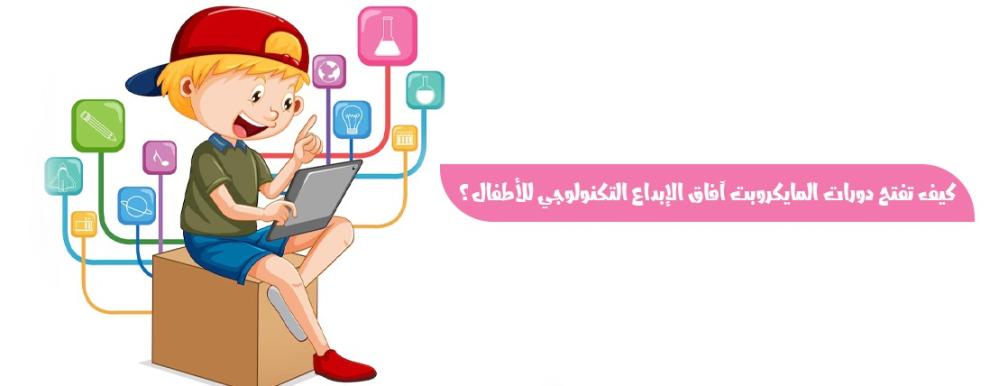
💡 How Micro:bit Courses Unlock Children's Technological Creativity
In a world evolving at an incredible pace, introducing children early to technology and programming has become a necessity, not a luxury. Among the most innovative educational tools making waves in this field is the micro:bit board—a small device with enormous capabilities for teaching kids the basics of coding and electronics in a fun and interactive way.
In this article, we’ll explore what micro:bit is, why it’s ideal for kids and beginners, and how it opens up new horizons for technological creativity—plus answers to common questions and tips for parents and teachers.
🖥️ First: What is Micro:bit?
Micro:bit is a small electronic board developed by the BBC to teach children and beginners the fundamentals of coding and digital technologies.
It contains a tiny processor, buttons, LED lights, sensors, and connectivity options like Bluetooth and USB.
Key Features:
- Small, lightweight, and portable.
- Easy programming using visual platforms like MakeCode or text-based languages like Python.
- Sensors for motion, temperature, and light measurement.
- Supports a wide range of projects from games to robotics.
🎯 Why is Micro:bit a Gateway to Technological Creativity?
1. 🧒 Suitable for All Ages
Whether a child is in primary school or high school, Micro:bit’s visual programming interfaces make it accessible without prior experience.
2. 💡 Unlimited Applications
You can program Micro:bit to create games, digital clocks, alarms, or even control robots—sparking out-of-the-box thinking.
3. 🛠️ Merging Coding with Engineering
Unlike purely theoretical courses, Micro:bit allows kids to see their code come to life through real devices and sensors.
4. 🌍 21st-Century Skills
Micro:bit helps develop:
- Logical thinking
- Problem-solving
- Teamwork and collaboration
- Creativity and innovation
5. 🚀 Encouraging Lifelong Learning
Once a child completes their first project, they are motivated to tackle bigger, more complex challenges.
🤔 Common Questions About Micro:bit Courses
What age is suitable for learning Micro:bit?
From age 8+, although some centers offer simplified lessons for younger kids.
Does a child need prior coding experience?
No—Micro:bit is designed for beginners and can be learned from scratch using visual programming tools.
How long does it take to learn the basics?
Typically, 4–8 weeks with weekly lessons, with the possibility to expand into bigger projects later.
Is Micro:bit only useful for kids?
No—it’s also great for hobbyists, educators, and even programmers testing quick ideas.
📚 Examples of Micro:bit Projects
- Digital thermometer displaying room temperature on LEDs.
- Step counter using the built-in motion sensor.
- Number guessing game via Micro:bit buttons.
- Small robot responding to programmed commands.
- Motion-detection alarm system.
📌 Sample Micro:bit Course Outline for Kids
- Sessions: 8
- Duration per session: 1 hour
- Target group: Kids aged 8+
- Mode: Online (Zoom) or in-person
Course Content:
- Introduction to Micro:bit components
- Basic coding using MakeCode
- Working with sensors
- Hands-on project applications
- Final challenge and student competition
💬 Tips for Parents & Teachers to Maximize Benefits
- Create a supportive, experiment-friendly environment.
- Combine Micro:bit with other activities like robotics or science.
- Encourage group learning in small teams.
- Dedicate weekly time for projects outside the course.
- Celebrate and showcase the child’s achievements.
Best Platforms & Resources to Learn Micro:bit
- MakeCode by Microsoft – Free, easy, supports drag-and-drop coding or JavaScript/Python.
- BBC Micro:bit Official Website – Tutorials and projects by skill level.
- YouTube Channels – Arabic & English tutorials with practical projects.
- Books & Guides – e.g., Micro:bit for Beginners (English or Arabic editions).
- Interactive Learning Platforms:
- Tynker – Fun project-based learning for kids.
- Code.org – Free courses linking Micro:bit with other sciences.
Comparing Micro:bit, Arduino & Raspberry Pi
- Micro:bit – Designed for kids & beginners; easy, beginner-friendly, comes with sensors and LED display.
- Arduino – For deeper electronics knowledge; requires understanding circuits and often extra components.
- Raspberry Pi – Like a small computer; suitable for advanced projects like AI systems, but pricier and more complex.
In short:
- Choose Micro:bit for easy, beginner-friendly learning.
- Choose Arduino for electronics and circuit building.
- Choose Raspberry Pi for large, advanced projects.
Impact of Learning Micro:bit on a Child’s Future
Children who learn Micro:bit early develop:
- Strong coding skills
- Understanding of electronics
- Creativity and problem-solving abilities
- Preparedness for future fields like robotics and AI
Suggested 4-Week Training Plan
- Week 1: Device introduction & LED programming
- Week 2: Sensors & simple game project
- Week 3: Wireless communication between devices
- Week 4: Final project and presentation
🏁 Conclusion: Micro:bit – A Key to the Future
Micro:bit courses are more than just coding lessons—they open a real door to the world of digital creativity. Through engaging projects and practical applications, kids develop technical skills and prepare for future challenges.
If you’re looking for a way to combine fun, learning, and hands-on experience, Micro:bit is the perfect choice for your child.

